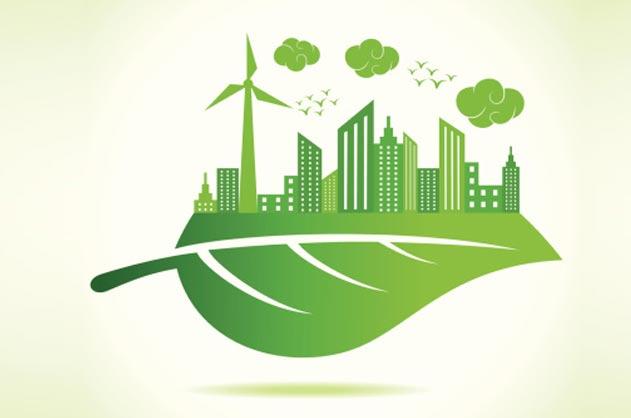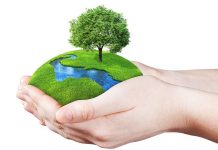This article is written by Deeksha Tiwari.
Table of Contents
Introduction
The 21st century is plagued with a plethora of environmental issues. Throughout the most recent couple of decades, it is an undeniable point that the earth has been presented with numerous perils. While these issues have had adverse effects on humans, resources, flora and fauna alike, effects on some have been worse than effects on others. There exists a solid connection between disparity and the environment. Ecological disparity or environmental injustice alludes to the way that components like pay, race and sex make a few populaces more powerless against the results of natural issues than others There are numerous instances of natural disparity. Across the globe, underdeveloped and developing nations are bound to experience the wrath of environmental degradation more than the developed hegemons. In fact, even within this structure of inequality exists a further substructure of oppression wherein individuals belonging to a certain minority of caste, class, gender, race tend to be affected more adversely.
Environmental Racism is a systemic form of racism wherein indigenous communities and communities of colour undergo a disproportionate burden of adverse health hazards caused by biased laws and dumping of toxic wastes like sewage works, mines, landfills, power stations, major roads and emitters of airborne particulate matter in areas that are in close proximity to them. As a result, these communities suffer greater rates of health problems attendant on hazardous pollutants.
It reinstates a structure of oppression and stratifies people, places and work. It institutionalizes the treatment of the lives of minorities as a commodity that can be traded for profit making.
The term was coined by African American civil rights leader Benjamin Chavis in 1982, describing it as “racial discrimination in environmental policy-making, the enforcement of regulations and laws, the deliberate targeting of communities of colour for toxic waste facilities, the official sanctioning of the life-threatening presence of poisons and pollutants in our communities, and the history of excluding people of colour from leadership of the ecology movements”.
How environmental racism manifests itself
“Racism is destroying our planet, and how we treat each other is essentially structural violence against our natural world,” said Christopher Schell (assistant professor of urban ecology at the University of Washington Tacoma.)
Intermittently when we consider racism, we consider isolation, police ruthlessness, and manipulating. At times we review the forceful underestimation of Native Americans, land burglary, and broken deals. Notwithstanding, a part of segregation and bigotry that frequently gets disregarded is environmental racism. It is a great representation that prejudice is something beyond political frameworks contriving to hurt and persecute non-white individuals and other minorities.
Environmental racism manifests itself in various forms.
Environmental racism manifests itself in the unsatisfactory treatment of laborers. A great many homestead laborers and their families are presented to hazardous pesticides. They likewise need to persevere through inadequate wages and work conditions. additionally, it stretches out to the exploitative workplace of sweatshops, the microelectronic business and extraction ventures. An excessively huge portion of the laborers who endure under unacceptable word related and wellbeing conditions are settlers, ladies and minorities.
If we talk particularly about the United States of America, there are fewer trees and plant diversity in low-income and racial minority neighbourhoods. These areas are also often close to the industries and factories and dumping sites. Studies published in the science journal proceedings of the national academy of sciences state that while the white population is primarily responsible for the air pollution, the black and the Hispanic communities are disproportionately harmed by it. According to the study white people experience 17% less air pollution than they produce, while black and Hispanic populations experience, respectively, 56% and 63% more pollution than they create. The phrase “I can’t breathe” has relevance even beyond police violence and brutality. The black community is literally struggling to breathe.
Recent studies show that continuous exposure to contamination has undermined air quality in these neighbourhoods and the respiratory soundness of the inhabitants and this may have assumed a job in the way they are influenced by the coronavirus pandemic. Recent evidence has linked air pollution exposure with COVID-19 mortality risk thus indicating direct links among environmental racism, air quality, and disproportionate death rates for Black and Indigenous communities.
Environmental racism is clear likewise at the worldwide level. Transportation of risky squanders from rich to poor third world nations isn’t an answer for the developing worldwide waste issue. Transboundary shipment of restricted pesticides, dangerous squanders and poisonous items, and fare of “unsafe innovations” from the United States, where guidelines and laws are more tough, to countries with more fragile framework, guidelines and laws, bears a resemblance to twofold norm. Inconsistent premiums and influence game plans have permitted toxins of the rich to be offered as momentary solutions for poor people.
An excess of 44 million tons of e-waste was created universally in 2017 – 6kg for each individual on the planet – and of that, every year around 80% is sent out to Asia. One e-waste center point is the town of Guiyu in China, where towers of disposed of PC parts heaped by the stream pollute the water flexibly with cadmium, copper and lead. Water tests demonstrated lead levels multiple times higher than WHO limits. Indeed, even a slight increment in lead levels, in the interim, can influence IQ and scholastic execution in youngsters. Different models incorporate the mass shipment of spent American batteries to Mexico, where unlawful waste dumps from plants worked by American, European and Japanese organizations have brought about taking off paces of anencephaly (when infants are conceived without cerebrums).
The instance of Flint, Michigan, is a great representation of environmental racism in real life. In 2014, to set aside cash, the city changed its water source to the Flint stream, however neglected to treat the new supply satisfactorily, uncovering the city’s 100,000 dominant black occupants to hazardous degrees of lead from maturing pipes and different contaminants, for example, E. coli. Somewhere in the range of 6,000 and 12,000 kids drank faucet water containing significant levels of lead, a neurotoxin, while 12 residents in the end passed on from Legionnaires’ infection. Notwithstanding, for year and a half, occupants’ grievances of noxious and stained water, of going bald and skin rashes, were excused until network pressure constrained the city to reconnect to the previous gracefully and concede bad behavior. The Michigan Civil Rights Commission inferred that the moderate authority response was a “result of systemic racism”.
Indian perspective
When we talk about Environmental racism against the backdrop of the Indian subcontinent, the structure and system of oppression remains the same while the people suffering this time are tribes and indigenous minorities whos’ rights are being snatched with every passing moment.
The Kodaikanal mercury poisoning has often been described as a well-hidden disaster which reeks of environmental racism.
In 1983, because of severe environmental regulation in the United States on mercury, Chesbrough Pond’s Inc. traded its decades-old mercury thermometer manufacturing plant to India from the US. The industrial facility was opened in Kodaikanal.
In 1986 Unilever’s auxiliary Hindustan Lever Limited (HLL) gained this thermometer plant as a piece of Unilever’s securing of Chesbrough Pond’s. The industrial facility had created a huge number of thermometers and utilizations around 900 kg of mercury consistently. The fabricated thermometers were for the most part sent out to the US and Europe. The HLL didn’t follow any wellbeing measures during its activities. It was falsely enrolled as a “glass fabricating” unit. Their normal method of arranging Mercury was blowing the mercury defiled air outside the processing plant and into Kodaikanal and the shola backwoods. Thousands of laborers were exposed to the mercury because of the perilous working conditions in the production line. Many laborers and their kids capitulated or experienced mercury instigated ailment. In March 2001, the HLL thermometer manufacturing plant was closed down because of the mounting open weight.
Even today a few thousand tons of mercury-polluted squanders and soils are lying inside and around the industrial facility. An examination by the Department of Atomic Energy of Government of India found that the free Mercury level in the climate of Kodaikanal was multiple times more than what is found in typical conditions. Analysis of water, dregs and fish tests gathered from Kodaikanal Lake indicated raised degrees of mercury four years after the stoppage of mercury outflows. The previous laborers of the manufacturing plant had obvious indications of Mercury harming, for example, gum and skin sensitivity and related issues. The introduction to Mercury is likewise influencing the people to come. It causes inborn inconsistencies among ex-laborers’ kids. The defiled Mercury has not been tidied up in a long time since this plant was closed down. The sullying keeps on affecting woodlands and groundwater.
Another case can be seen in the Keonjhar district in Odisha where A total of 64 mining projects has led to the diversion of 10451.39 hectares of forest land over 38 years which is the highest loss of green cover in Odisha since 1980. The local population which mostly comprises of tribes has been deprived of basic rights like access to clean air, water and greenery.
Constant disposal and dumping of processed and mineral-rich rocks which are the by products of mining, cause air contamination and make the territory dusty thus raising the troubles of residents. When questioned about the situation, Sakuntala Dehury, a resident of Nitigotha village in the Talakainsari panchayat said “The dust from the dumping sites often engulfs our village and affects regular movement of people outside their homes. The roads leading to our village have been destroyed by trucks belonging to the mining companies,”
Roads and streets prompting numerous towns in the region have been severely harmed because of the consistent transportation with the mining trucks. These vehicles frequently make a straight shot to the dumping yard in hundreds, imperiling particularly the development of youngsters, the old and the individuals who experience issues strolling on the pothole-dabbed streets. The conditions are more regrettable during storms. Safe drinking water is another scarcity. The zone is spotted with orange-shaded lakes, effluents from mining and post-mining exercises. Tree hugger S.N. Patro from Odisha said that the poisonous orange shows elevated levels of iron, chromite and other overwhelming metals, which are regularly blended in with the water bodies in mining zones.
In their paper “Impact of mining on socio-economic and health status of indigenous people – A case study of Keonjhar”, Lipsa Dash from Sambalpur University and Vijayeta Priyadarshi from the Government Women’s College, Keonjhar pointed out the rampant cases of respiratory disorders, water-borne diseases, eye and joint problems among the population of Kumunda panchayat in the Banspal block of the district.
During the course of their research they created the following databases.
72% of people were from the scheduled tribes, 26% were from the scheduled castes while only 2% were from other backwards classes or the general category.
There were primarily three Factors affecting livelihood.
Depilation of forest resources, Steady increase of waste lands and Shrinkage of grazing field for domestic animals
83.57% (117 individuals) of the population was affected by the depletion of forest resources, 63.57% (89 individuals) were affected by the steady increase of waste lands and 2.14% of the population (45 individuals) were affected by the shrinkage of grazing fields for domestic animals.
The same study also showed that 56.43%( 79 individuals) suffered from Respiratory Infection, 87 individuals( 62.14%) suffered from malaria, 53 individuals( 37.86%) suffered from waterborne diseases, 34 individuals (24.28%) suffered from eye problems, 62 individuals ( 44.28%) suffered from skin diseases and 59 individuals ( 42.14%) suffered from Joints pain, Arthritis.
How the laws have failed the victims
India’s Ministry of Environment, Forests and Climate Change enervated the requirements for public consultation with communities affected by mining and other infrastructure projects, and sought to dilute provisions mandating the free, prior and informed consent of Adivasi communities in 2014.
On 30 May 2014, the MoEFCC while issuing an executive memorandum stated “existing coal mines with a production capacity of up to 16 mtpa (million tonnes per annum) would not need to conduct public hearings with project-affected communities before expanding their capacity by up to 50 per cent”. Under the Environment (Protection) Act these public hearings are mandated as they are the only existing formal means of consultation under Indian law for both indigenous and non-indigenous communities that are affected by the said project.
Subsequently, with the passage of time, the Ministry also exempted the mines with a capacity above 16 mtpa seeking to expand their capacity by up to 5 mtpa and mines with a production capacity of over 20 mtpa seeking to expand capacity by up to 6 mtpa from conducting public hearings.
The Environment Impact Assessment notification of 2006 was also amended which exempted certain categories of projects, including irrigation projects which required less than 2000 hectares of land, from requiring environmental clearances, and subsequently from consulting the communities.
Conclusion
The aspects and case studies covered above are just a couple of drops in the ocean of issues that are faced by the marginalised communities due to environmental issues and degradation.
As to what can be done to solve the problem, I believe that acknowledging of the phenomenon of environmental racism and injustice and the fact that certain communities face most of the wrath of these issues, by people and policy makers is a good point to start.
We already have a country to look up to when it comes to this. This year, Canadian MP Lenore Zann introduced Bill C-230, the National Strategy to Redress Environmental Racism Act. It begins by recognizing that “a disproportionate number of people who live in environmentally hazardous areas are members of an Indigenous or racialized community.” The bill would require the environment minister to examine the link between race, socioeconomic status, and environmental risk; develop a strategy to redress environmental racism and report regularly on progress. While this is obviously not enough, it is a hopeful start.
The recognition of a healthy environment as a basic human right is the need of the hour.
Last year for economic-reform policies, guiding principles for human right impact assessment were adopted by the UN Human Rights Council. The same process can be mirrored for environmental regulations.
The need of the hour is to look at the problems through a human rights lens which would remove the existing blind spots and will conceive a commitment to ensuring a healthy environment for all.
LawSikho has created a telegram group for exchanging legal knowledge, referrals and various opportunities. You can click on this link and join:
 Serato DJ Crack 2025Serato DJ PRO Crack
Serato DJ Crack 2025Serato DJ PRO Crack










 Allow notifications
Allow notifications



